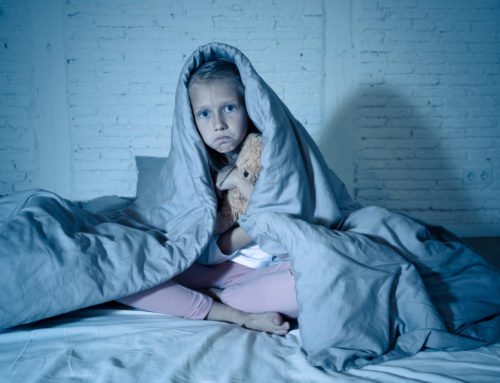by Tom McSheehy MSW, LSW
Suicide is not just an individual or family problem, it is a societal problem and needs to be addressed on the societal level if we are going to make any progress in preventing suicides.
Suicide has become a major mental health concern with attempts skyrocketing over the last 20 years, and is a leading cause of death among young people in the United States. Teen suicide is a huge issue with thousands of teens dying by suicide every year, and many more having thoughts of suicide or making suicide attempts.
The pandemic didn’t create the mental health crisis that is going right now, but it did illuminate the crisis that has been building for years.
Suicide is a taboo topic that is very difficult and uncomfortable to discuss openly and honestly, and we have not made significant progress in preventing them. We often put band-aids on major mental health issues like suicide and don’t look for the root causes.
In my 26 years as a licensed social worker and my 21 years as a teacher, I have worked with a lot of young people who were dealing with challenging mental health issues. I plan to share in this article what I have learned about the root causes of suicide.
I have thought seriously about suicide at various times in my life when I was stuck in the darkness and dealing with some type of intense physical and or emotional pain for extended periods of time. I have known people who took their lives and have gathered useful information from knowing them well and then losing them. I feel like I have a good sense of what goes through the mind and body of someone who is thinking of suicide or someone who took their life.
It seems shocking that some people want to end their lives. People don’t want to die, but they feel stuck in physical and/or emotional pain and don’t know a way out. They want the pain to end, and death seems like the only way out of their pain. What causes someone to do something so drastic as to take their life?
1. Stigmas and Shame — Imprisoned in Solitary Confinement
First, there are so many outdated and unhealthy beliefs about emotions and mental health that have been passed along for generations. These beliefs about what is OK and not OK in terms of feeling and expressing emotions have stigmatized healthy expression of emotions like sadness, anger, hurt, and fear and caused so many mental health issues. Children and adolescents develop a sense of shame about being vulnerable and sharing emotions.
This shame causes young people to push down their emotions and ignore them which can cause a range of mental health and physical health issues. The shame can also cause young people to be very self-critical which can increase their mental health issues.
Mental health stigmas and shame keep young people from reaching out for help or sharing their emotions. Young boys are taught that expressing emotions of sadness, fear, or hurt is a sign of weakness and that anger is a manly emotion. Boys learn to express their sadness, fear, and hurt as anger or violence.
Many girls learn that healthy aggression and anger is not OK, especially when in the presence of boys, and their healthy anger along with other feelings gets turned against themselves and is expressed in cutting, eating disorders, body issues, and depression.
Dr. Brene Brown, professor at University of Houston, has shown through her research how much vulnerability, belonging, and shame can affect work places, schools, and other organizations. Mental health that comes from quality connection requires vulnerability and authenticity.
Emotions are just information in the form of energy; and they need to go somewhere, just like a flowing river. The energy can get stuck in the body when ignored or pushed down or it can be channeled into healthy expression and productive action.
The most critical factor required for mental health is quality connection to other human beings. Shame causes young people to isolate and not connect with other people which intensifies their anxiety and depression.
The mental health stigmas and beliefs that we have learned and inherited from our parents, teachers, coaches, ministers, and other adults can cause young people to isolate when they are feeling intense emotions because they are ashamed. Shame and isolation are the main root causes of suicide. If young people isolate, whatever emotions or mental health issues that they’re dealing with are going to get worse and possibly lead to suicide.
Changing the paradigm of unhealthy stigmas and beliefs which cause young people to isolate because of shame is a societal issue and needs to be addressed both on the individual and on the societal level. The quickest and most economical way to change stigmas and beliefs is by teaching and modeling social emotional learning in homes, classrooms, and locker rooms.
What are your beliefs about feeling and expressing emotions? As a parent, your actions are much more important than your words in terms of managing your own emotions and calming yourself.
2. Highly Sensitive Youth – Stuck in Shame
The second main root cause of suicides is sensitivity. This aspect of suicides is rarely discussed. 15-20% of all people are highly sensitive. Dr. Elaine Aron has been a pioneer in this area for many years. Most parents, teachers, family doctors, and pediatricians don’t know about the qualities of highly sensitive youth (HSY) and how to support their mental and physical health. The nervous systems of highly sensitive youth can get overwhelmed because they feel every emotion and physical sensation so intensely. Adults are often concerned and scared by the intensity of HSY’s emotions and their emotional meltdowns. Adults can sometimes make comments that are judgmental and hurtful because they feel helpless to support highly sensitive youth.
HSY start believing that something is wrong with themselves because they see and experience the world so differently than 80% of youth. They can feel like something is wrong with them which can magnify their emotions and their negative beliefs about themselves. They start isolating more and feel like no one understands them because everyone is trying to change who they are. They hear that they are “too sensitive” and “need to toughen up”. All of the advice just adds to their shame and causes their mental health issues like anxiety to worsen. Depression can set in because their self-esteem gets low and feelings of aloneness increase.
Being highly sensitive is a form of intelligence, and HSY need to learn about who they are and the gifts and strengths of being a HSY. As their confidence in who they are and their unique gifts grow, they may feel less shame and isolation around not being like the other 80% of youths, and their risk of suicide may decline.
3. Trauma / PTSD — Invisible Suffering Expressed in Behavior
The most difficult mental health issue that I have experienced is Post Traumatic Stress Disorder (PTSD). The best way that I can describe PTSD is that your brain realizes that you are alive, but your body feels like it is going to die in any moment. It is a horrendous experience that can last a lifetime unless you have access to a trauma therapist.
An individual with PTSD is living in a constant state of flight or fight or freeze survival response. It is an exhausting way to live and eventually individuals can lose hope and want to die.
Veterans of war can have high rates of suicide due to PTSD and other mental health issues. An estimated 30,177 active duty service members and war veterans of the post 9/11 wars have died by suicide, significantly more than the 7,057 killed in “Global War on Terror” military operations. (Source: Dr Thomas Suitt, Boston University)
Many children who grow with some type of abuse or neglect can have developmental trauma. Because these children don’t have a secure and healthy connection to their caregivers, their emotional age is usually younger than their chronological age.
These children can have major issues with focusing attention, regulating emotions, controlling impulses, and calming themselves when stressed. They often deal with anxiety and depression and many of them can have insecure attachment profiles. They are constantly in a state of survival where a feeling of safety is difficult to feel. They are constantly vigilant to danger and their ability to focus and pay attention is compromised.
The constant fear and scary flashbacks are very difficult and exhausting for young people who are dealing with trauma or PTSD and can have a profound effect on their brain development and on their nervous system function. Without the support of a caring adult or trauma therapist, they can feel stuck in darkness and isolation and think about suicide as a way out of the emotional pain of trauma.
Parents and teachers often lack training and knowledge about trauma, and its effects on young people’s behavior and learning. The intense emotions and symptoms connected to trauma can cause young people to believe that something is inherently wrong with them, and that their emotional pain seems invisible to adults. Traumatized young people often act out in class or at home and then they get punished for their acting out behavior which then magnifies their mental health issues.
4. The Brain / Gut Connection — Stuck in A Vicious Cycle
Anxiety and fear can disrupt normal and healthy digestion which can negatively impact brain chemicals and nervous system function.
Young people can get stuck in a vicious cycle of poor digestion disrupting production of important brain chemicals which worsens mental health issues. The intestines produce 90% of the body’s serotonin, which is the neurotransmitter that helps us to feel an uplifted and balanced mood. Our gut also makes 50% of the body’s dopamine, which is a neurotransmitter that is released when we are doing something pleasurable. Finally, the intestines are home to the 70% of immune system which protects our bodies from viruses and other outside forces.
This Frontier research article highlights the work focused on how gut health impacts mental health through the production of important neurotransmitters of serotonin and dopamine.
With intense anxiety from trauma, high sensitivity, or other causes, young people’s digestion of their food can get disrupted, and this poor digestion results in less serotonin and dopamine being produced which will impact mood and feelings of pleasure related to rewarding events. Diet, exercise, and social emotional skills are vital to manage stress and improve mental health.
5. Lost in Loneliness — No One Understands Me!
Loneliness among teenagers has increased dramatically over the last 10 years. A study published in the Journal of Adolescence looked at measures of loneliness from over one million students in 37 countries. They found that in 2012, 18% of teenagers reported being lonely and then in 2018, 37% of teenagers said that they were lonely. This increase in loneliness is a major concern in terms of mental health and suicide prevention.
The brain and nervous system need quality connection in order for optimal social emotional development. In order to maintain mental health, young people need to feel connected to caring adults who can model and support SEL skill development.
With the increased speed and demands of life, parents and teachers are even more busy with less time to connect and talk with young people. With less opportunities for face to face, quality connection with adults and peers, young people are turning to their phones and the internet for connection. The experience of being face to face with people is much more nourishing for our brains than connection through a screen.
There is no doubt that technology has had a profound influence on how young people spend their time and on how they communicate and connect with each other. With the increased use of technology and screens along with increased speed and demands on young people, young people are attempting to communicate and connect through screens and social media.
Dr. Jean Twenge, psychology professor at San Diego State University, has studied the relationship of technology to increasing rates of loneliness, depression, and self-harm among teenagers. She concludes that technology usage is a big part of what’s driving these mental health issues, possibly because this usage crowds out more genuine connections.
The interplay of technology and social media has had a profound influence on the self-esteem and mental health of young people. Social media is reducing the ability to practice and exercise the SEL skills of reading non-verbal clues, feeling and sharing uncomfortable emotions, and resolving conflicts face to face instead of on social media. Young people are using technology to express emotions and bully people without any accountability. In the world of the likes of social media, young people are constantly comparing themselves to what they see on social media, and this can cause feelings of inadequacy and shame.
It is so important to educate and support young people in being reflective and aware of using technology to create nourishing and rewarding connection versus using technology to get away from feeling uncomfortable emotions.
Mental health is not the absence of mental health issues or challenges, but rather it’s the quality of connection that we have in our lives and the level of vulnerability and authenticity in those connections. Mental health is a state of healthy connections.
What Can You Do?
It can be terrifying as a parent to think that your child may want to take their own life, but there are things that you can do to help. Do see any of these warning signs?
- Withdrawing from normal activities, family, and friends
- Spending larger amounts of time alone
- Displaying more energy or less energy or a radical change in behavior
- Dealing with depression or anxiety
- Changes in sleeping or eating habits
- Obsession with death and dying
- Giving favorite possessions away
- Distracted or impulsive behavior
- Acting out behaviors
- Using alcohol or drugs
- Reduced effort in school
- Becoming suddenly cheerful after being depressed
- Increase in physical complaints like stomachaches and headaches
- Taking unnecessary or dangerous risks
- Expressing concerning statements like, “I won’t be a problem much longer” or “I can’t take this much longer”.
- Is being bullied by friends or at school
If you see any of these warning signs or if your child is going through very stressful changes or difficult times, seek out a qualified mental health professional who clicks with your child and support her in getting to her sessions. Be sure to also reach out for support and guidance for yourself from a qualified mental health professional. Talk to your child openly about emotions (which can include taking about suicide) and create an environment where s(he) feels safe coming to you when they are feeling intense emotions and struggling in some way.
In Part 2, we will continue to explore the root causes of suicide and more ways that you can support your child in strengthening their mental health.





